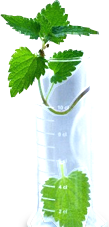



Author(s): Sultana Arshiya
Gossypium herbaceum Linn is known as cotton plant, belongs to the family Malvaceae, and occupies an imperative place in traditional systems of medicine especially in Unani and Ayurvedic medicines. The plant is widely distributed throughout western India, Africa, Middle East countries, central Asia and graded availability is found in Iran, Afghanistan, Russian and Turkistan. The qualitative phytochemical study of this plant extract indicates the presence of carbohydrates, saponins, steroids, glycosides, phenolic compounds such as tannins and flavonoids. The principle pigment of cotton seed is gossypol, a phenolic compound. The unsaponifiable fraction of Indian cottonseed oil contains sitosterol, ergostoerol, lipids, gossypol, oleic, palmitic, and linoleic acids. The herb has been used traditionally from antiquity, in the treatment of inadequate lactation, bronchial asthma, dysmenorrhea, diarrhea, dysentery, otalgia, sexual debility, general weakness, diabetes, lung and skin diseases. It chiefly possesses antifertlility, galactagogue, antispermatogenic, antidiabetic, antiviral and antibacterial activity. This work is an endeavor to explore and assemble the various pharmacological action and pharmacognostic aspects of the plant G. herbaceum reported till date.